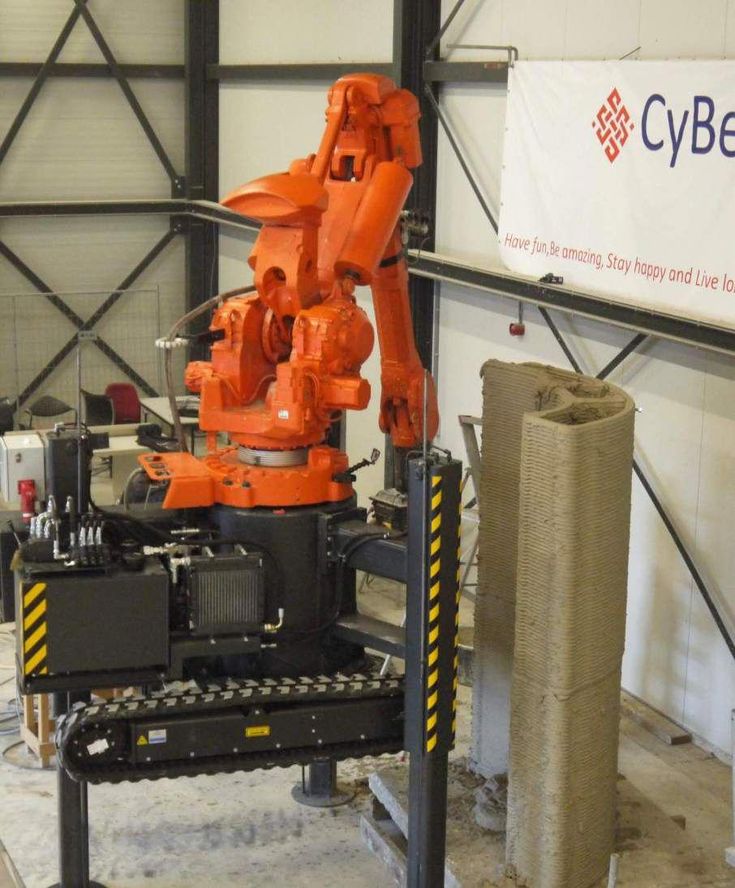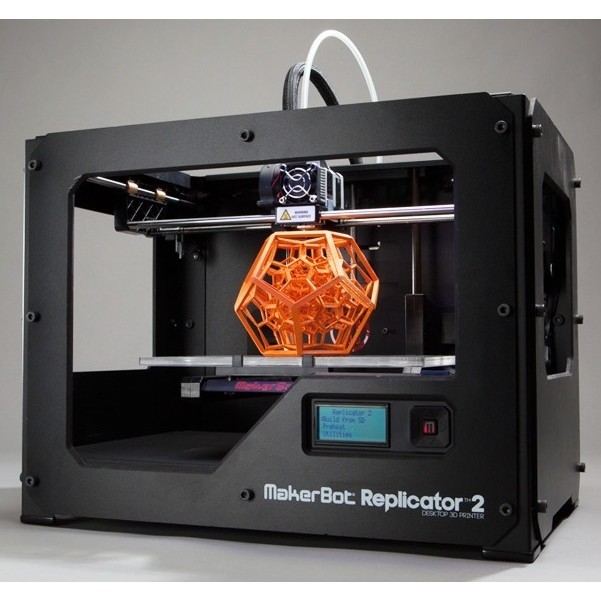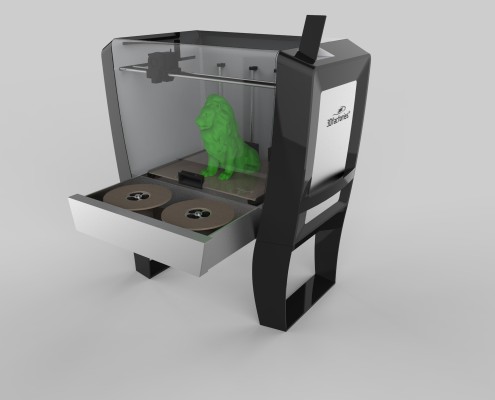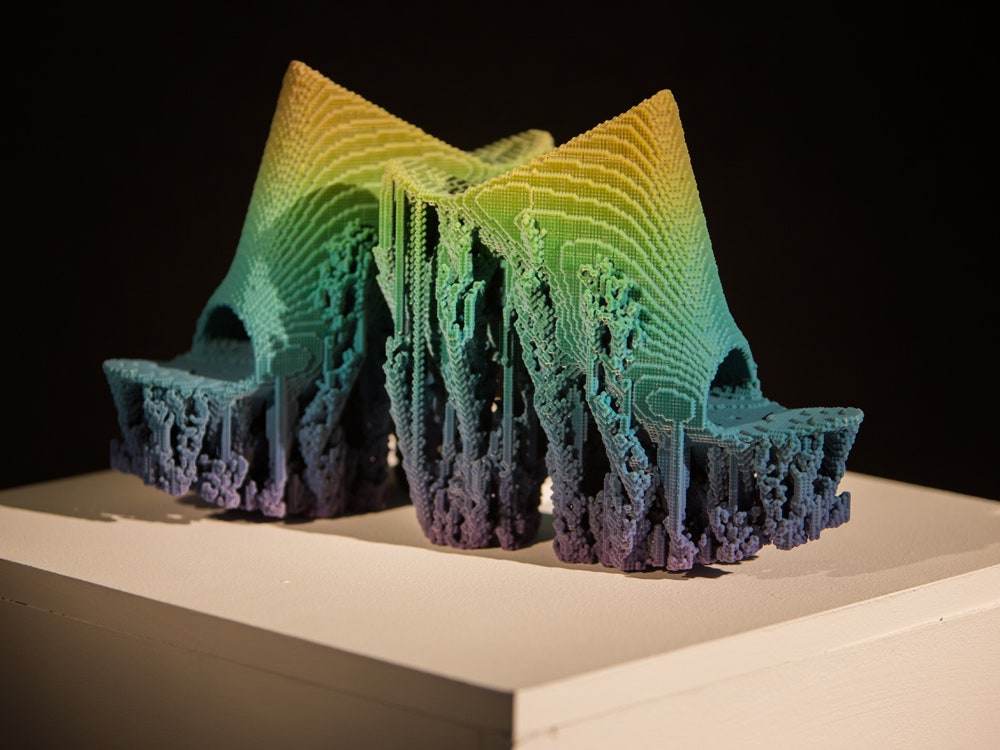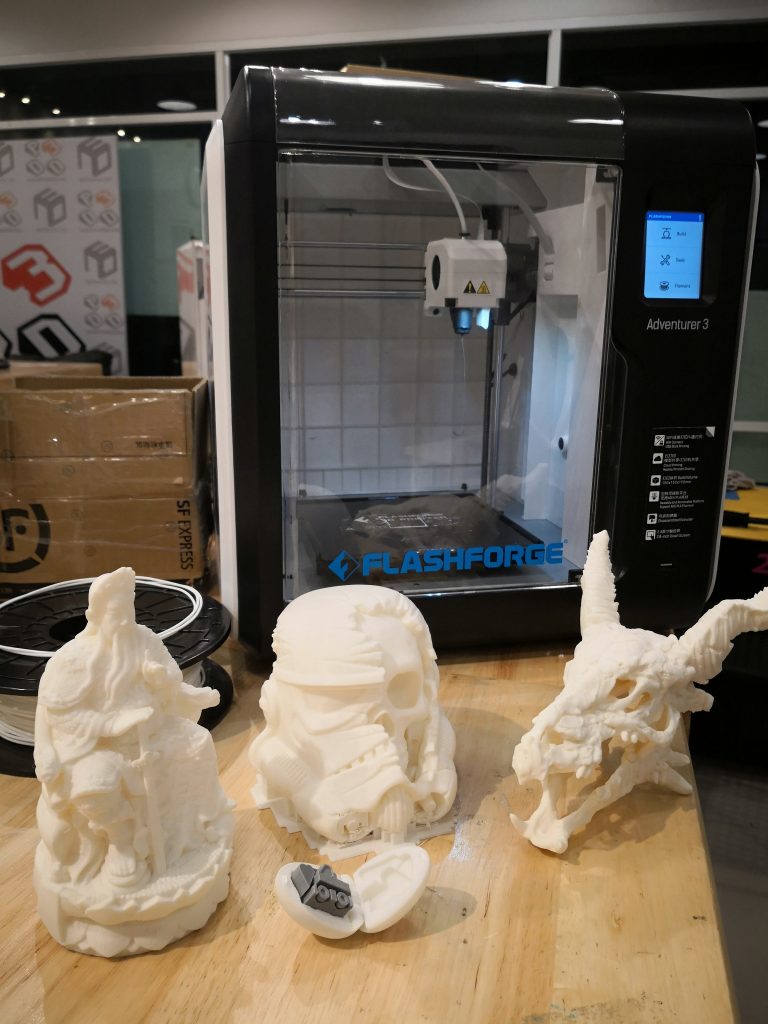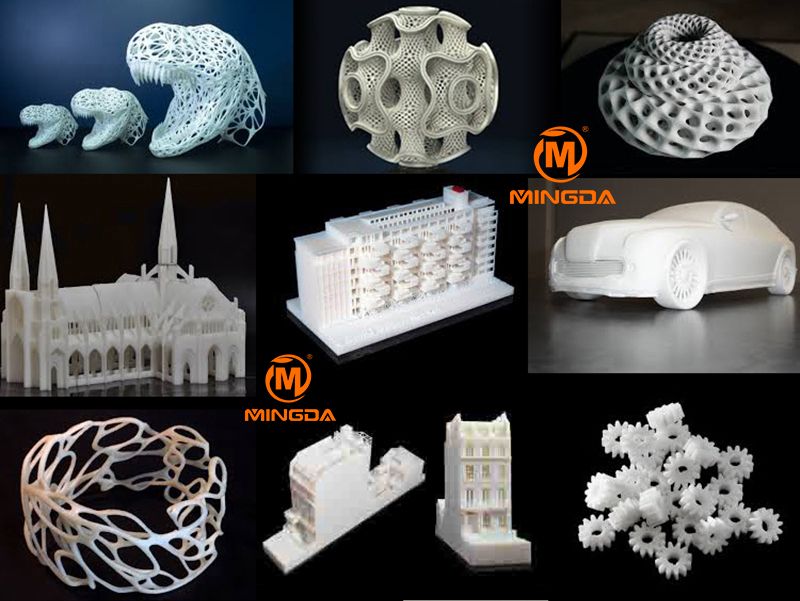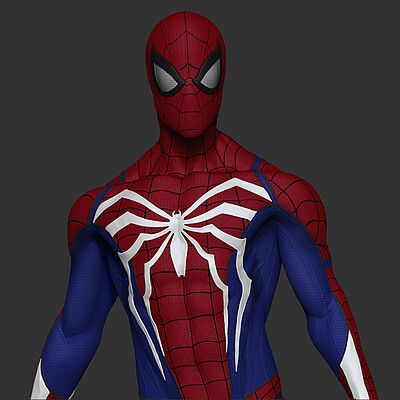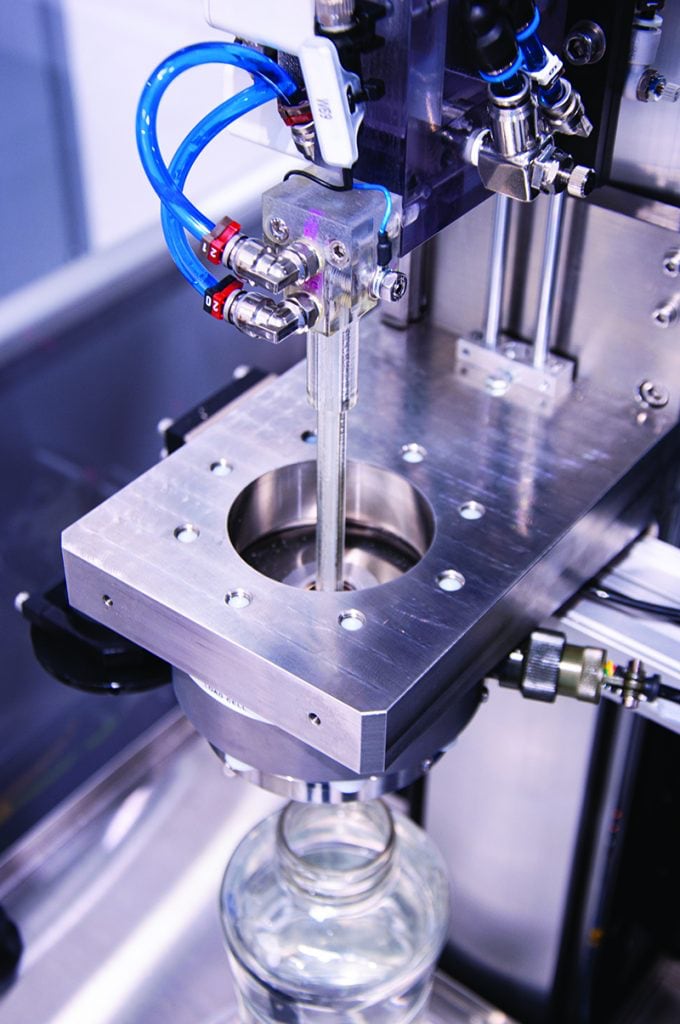3Dp 3d printing
Welcome to 3D Platform
3D Printing Case Studies
Alstom and Amtrak
Alstom and Amtrak
Prototyping the train cockpit
Read More...
Highland Community College
Highland Community College
Aiding higher education, inspiring elementary students, and connecting with local organizations.
more...
Idaho Virtualization Lab: Giant Spider
Idaho Virtualization Lab: Giant Spider
IVL uses large 3D printed parts to create stunning exhibits.
more...
Idaho Virtualization Lab: Prehistoric Fish
Idaho Virtualization Lab: Prehistoric Fish
Idaho Virtualization Lab (IVL) 3D prints a giant Prehistoric Fish
more...
PBC Linear Factory Model
PBC Linear Factory Model
Using 3D printed models to diagram the new manufacturing facility
Read more...
Ridoret Group
Ridoret Group
Window prototypes and manufacturing
Read More. ..
Sunnyslope High School
Sunnyslope High School
Components for robotics competition
Read More...
C7 Cabon
C7 Cabon
Prototypes and consumer-ready car parts
Read More...
PBC Linear
PBC Linear
Ramp fixtures for shop floor
Read More...
Rapid 3D: Not So Miniature
Rapid 3D: Not So Miniature
Radio-controlled truck body
Read More...
3D Printing Tech
3D Printing Tech
Giant Coke bottle promotion
Read More...
Fox Sports Robot
Fox Sports Robot
Larger-than-life FOX Sports Robot
Read More...
Thermoform
Thermoform
Large thermoforming dies
Read More...
Progress Rail
Progress Rail
Casting and machining tool mock-ups
Read More...
Thingergy
Thingergy
Specialty item techniques
Read More.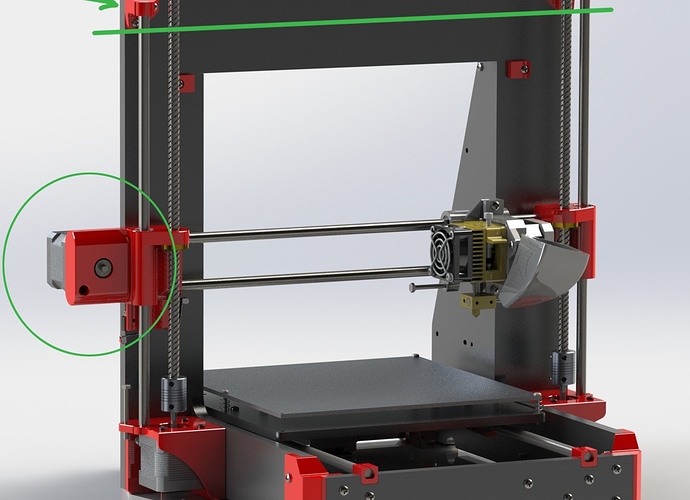 ..
..
Warwick Drone
Warwick Drone
Seven-foot drone
Read More...
Titanic Design
Titanic Design
Full sized models
Read More...
Innovative 3D
Innovative 3D
Metal parts with complex shapes
Read More...
Gonzaga University
Gonzaga University
Ankle Foot Orthosis
Read More...
XFAB Printing Lab
XFAB Printing Lab
Marine Corps capitalizes on 3D Printing technology.
more...
Large build volume
3D Platform is committed to making your biggest ideas a reality. We design products that push the limits of innovation, and that’s why we are a leader in the manufacturing of large format, industrial-strength 3D printers. A widening variety of industries in manufacturing, entertainment, and academia have continued to take full advantage of these large format printers to create prototypes, mass-produce products, and build the future.
What is large? Our large build area is up to 1 meter x 1.5 meter x 0.7 meter. This offers over 200-percent more creative space than a typical desktop 3D printer, and means our customers don’t have to scale down or print multiple parts that require assembly. In addition, a large build area can incorporate rapid design iterations to vastly reduce market entry time.
Traditional desktop 3D printers are fine for prototyping parts, but can be costly in terms of volume production and time-to-market. In contrast, industrial manufacturers can customize our large format 3D printers, providing the ability to produce near-net shape parts. The result is decreased costs and reduced time-to-market.
Large format 3D printing made easy
Don’t let the words industrial strength or large format scare you! Printing with 3DP can be as easy as easy as 1 - 2 - 3D! Learn the different steps on how to successfully create a 3D print by watching our video 1-2-3D Printing.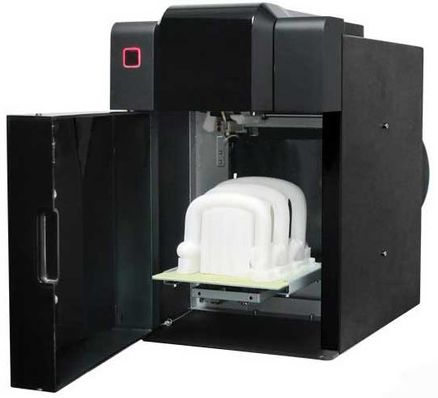
Create your 3D model. Start with a 3D model that was either created in 3D modeling software or download from the internet. Next, save the model as an OBJ or an STL file. The 3D printer processing software best understands these file types.
Process the model in 3D printing software. Import the file and set a few standard model modifiers such as the number of top and bottom layers, perimeters, and infill. Next, increase the strength in the infill box by setting the interior fill percentage to 20 percent. If supports are needed, they can be added by clicking the “generate support material” button. Click “Ok” to accept the process settings and observe the model with its new layer slices. Finally, save the file in g-code format, which gives the printer step-by-step instructions.
Send file to printer. Heat the bed and remember to home the axes prior to each print. Next, select the g-code file. Once the target temperature for the extruder is reached, then the print will begin. Watch the first few layers to make sure the print adheres to the build area and that the filament is flowing smoothly.
Watch the first few layers to make sure the print adheres to the build area and that the filament is flowing smoothly.
Unmatched speed with 3DP extruders
Push your additive manufacturing to new heights with 16-times the speed of competitors’ extruders. Current market extruders are limited in terms of their thermal capacity, therefore making them insufficient in their abilities to melt and dispense filament rapidly. They typically have an average throughput of 36 grams per hour. In contrast, our HFE 900 high flow extruders can provide a throughput of 1,350 grams per hour, resulting in a substantial decrease in 3D print time.
Our flexible line of extruders allows you to change nozzles depending upon your application and purpose. Use a small diameter nozzle for fine layer resolutions or go bigger with large diameter nozzles for fast printing and strong parts.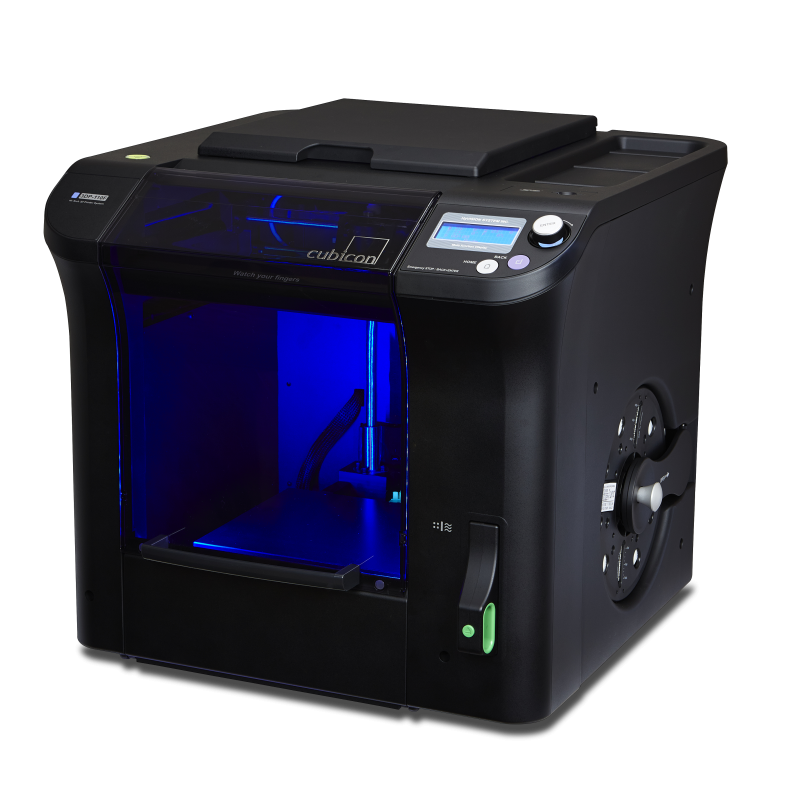 Modular designs can accommodate filament sizes from 1.75 mm to 6 mm and nozzles sizes from 0.2 mm to 5 mm. In addition, quick-swap dual extruder heads deliver high quality 3D prints while being independently controlled for speed and extruded material amounts.
Modular designs can accommodate filament sizes from 1.75 mm to 6 mm and nozzles sizes from 0.2 mm to 5 mm. In addition, quick-swap dual extruder heads deliver high quality 3D prints while being independently controlled for speed and extruded material amounts.
Reliability with the open market advantage
Technology used for commercial-grade products won’t work for production applications. Therefore, companies need to answer the demands of reliability and performance by utilizing industry-proven mechanical and electrical components. For this reason, 3DP offers motion system technology that improves cycle time and final part quality.
3DP is harnessing the energy of a global network of material scientists by using open market solutions. Within these open markets, skilled experts blend various polymers to achieve specific end goals for certain projects. Additionally, open software markets can spark innovation by providing real-time 3D printed models that can be easily accessed and shared. Open source and reliability are why top industry leaders look to 3D Platform to stay competitive in demanding markets.
Open source and reliability are why top industry leaders look to 3D Platform to stay competitive in demanding markets.
Go big with the power of innovation
Think BIG, Print BIG, Save BIG! 3D Platform is using innovation to create large format 3D printers that are sized to meet any need. Take a look at the future of 3D printing!
WorkCenter 500 Series – This extra-large format 3D printer not only boasts a bigger build area, but it’s also affordable. The extra-large build volume of 1,400 mm x 2,800 mm x 700 mm provides affordability, but without sacrificing quality or throughput. The WorkCenter 500 is currently the only machine in the large format category to provide the option of pellet or filament extruder(s) – or both!
WorkCell – Our large format 3D printer with heated enclosure is currently in the design process! With a print volume of more than 1 cubic meter, the WorkCell’s heated enclosure will enable users to go beyond polymers that are typically printed in an open ambient environment, including commodity plastics, engineered plastics, and high-performance plastics.
Blog Posts from 3D Platform
3D Printer Configurator
Request a Sample
Large Scale 3D Printer, Commercial and Industrial Solutions
400 Series Workbench Xtreme
$49,999.00
Configure
For customized, full-scale printing capabilities that accelerate time from ideation to application at an affordable price, the WorkSeries 400 (Workbench Xtreme) is the only large scale 3D printer that has been engineered from the ground-up. Most importantly, the unique, parametric design can be easily adjusted to match the needs of our customers.
- Print Volume: 1000 mm x 1500 mm x 700 mm (1.05 m³, +2×)
- Extruder Standard Type: HFA
- Standard Max Throughput: 2×
- Extruder Option Type: HFE
- Option Max Throughput: Up to 16×
- Controller: 32-bit, 120MHz ARM Cortex M4 Processor
- Display: 7” TFT, with Wifi
- Remote Monitor & Operation: Standard
300 Series Workbench Pro
$37,999. 00
00
Configure
Our 300 Series WorkbenchPro is a Fused Filament Fabrication (FFF) additive manufacturing system with a large 1 m x 1 m x 0.7 m build area. Therefore, its industrial strength mechatronics deliver superior performance and reliability. Further, with SIMO Series actuators and Constant Force™ anti-backlash lead screws and nuts, the WorkbenchPro provides a rugged, industrial framework that won’t let you down. Additionally, the 3DP WorkbenchPro large scale 3D printer delivers 40% more build volume and up to 16x faster print rates with its unique features.
- Print Volume: 1000 mm x 1000 mm x 700 mm (0.7 m³, 1.4×)
- Extruder Standard Type: HFA
- Standard Max Throughput: 2×
- Extruder Option Type: HFE
- Option Max Throughput: Up to 16×
- Controller: 32-bit, 120MHz ARM Cortex M4 Processor
- Display: 7” TFT, with Wifi
- Remote Monitor & Operation: Standard
200 Series Workbench Classic
$28,999. 00
00
Configure
Print larger parts at faster rates with the 200 Series Workbench Classic large scale 3D printer. Overall, this classic printer features auto-mesh bed leveling, SurePrint Step-Servo hybrid motors, and duel electronics with remote operating and monitoring capabilities.
- Print Volume: 1000 mm x 1000 mm x 500 mm (0.5 m³, 1×)
- Extruder Standard Type: Volcano
- Standard Max Throughput: 1×
- Extruder Option Type: HFE
- Option Max Throughput: Up to 16×
- Controller: 32-bit, 120MHz ARM Cortex M4 Processor
- Display: 7” TFT, with Wifi
- Remote Monitor & Operation: Standard
100 Series Work Table
$17,999.00
Configure
The 100 Series WorkTable large scale 3D printer features the same build area size and mechanical features as the Workbench Classic. It is designed for smaller businesses, schools, and entry-level designers looking to implement large-format, industrial strength 3D printing into their projects.
It is designed for smaller businesses, schools, and entry-level designers looking to implement large-format, industrial strength 3D printing into their projects.
- Print Volume: 1000 mm x 1000 mm x 500 mm (0.5 m³, 1×)
- Extruder Standard Type: Volcano
- Standard Max Throughput: 1×
- Extruder Option Type: HFA
- Option Max Throughput: 2×
- Controller: 16 MHz Processor
- Display: LED
- Remote Monitor & Operation: NA
Sigma D25 3D Printer
$3,995.00
Buy Now
The Sigma D25 from BCN3D is a new generation of our best-known 3D printer, engineered to grant maximum productivity through a hassle-free experience thanks to features like its massive print volume and full connectivity. Powered by our Independent Dual Extruder (IDEX) system, the Sigma D25 delivers quickly functional prototypes with quality and precision.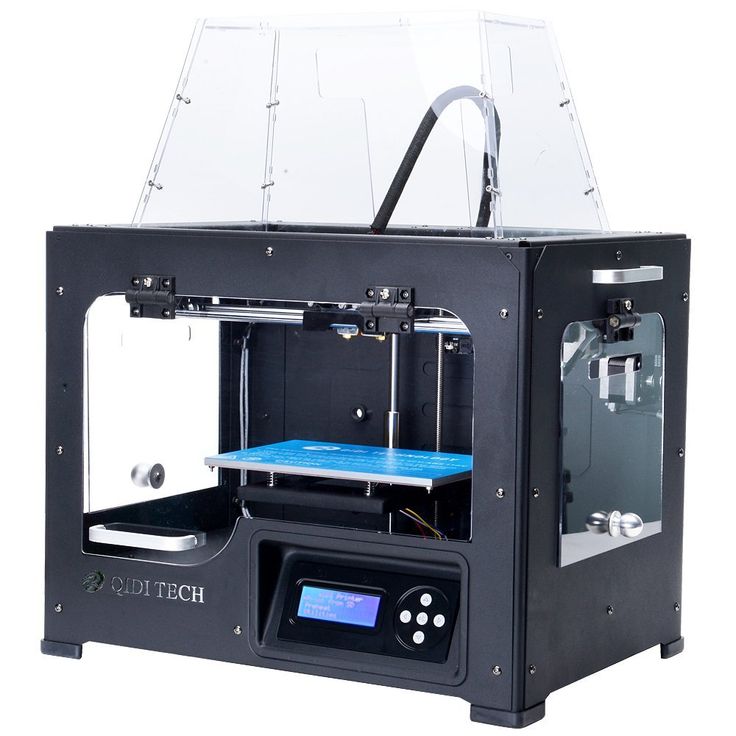
- Print Volume: 420 x 300 x 200 mm
- Printer Size: 690 mm (W) x 530 mm (D) x 550 mm* (H) (27.2” x 20.9” x 21.7”) *720mm with bowden (28.3”)
- Precision Z axis: 1.0 microns
- Precision XY axis: 1.25 microns
- Max. extruder temperature: 300ºC
- Operating temperature: 15 ºC - 30 ºC
- Max. bed temperature: 80 ºC
- Nozzle diameters: 0.4 mm / 0.8 mm
- 5 printing modes: Single, Duplication, Mirror, Multimaterial, Soluble Supports
Epsilon W27 3D Printer
$5,995.00
Buy Now
The Epsilon W27 from BCN3D is a powerful professional 3D printing solution, designed to deliver large-scale parts with industrial-grade materials. It features a passive heated chamber, full enclosure, and humidity-controlled environment. Powered by our Independent Dual Extruder (IDEX) system, the Epsilon Series delivers exceptionally strong functional parts with quality and precision.
For an all-in-one 3D printing solution, customers can opt for a Smart Cabinet Bundle. The Epsilon W27, together with the Smart Cabinet (SC) filament storage system, work seamlessly together to help boost your printer's performance and keep your materials in optimal condition for a superior 3D printing experience.
- Print Volume: 420 x 300 x 200 mm
- Printer Size: 690 mm (W) x 530 mm (D) x 750 mm* (H) (27.2” x 20.9” x 29.5”)
- Precision Z axis: 1.0 microns
- Precision XY axis: 1.25 microns
- Max. extruder temperature: 300ºC
- Operating temperature: 15 ºC - 30 ºC
- Max. bed temperature: 120 ºC
- Nozzle diameters: 0.4 mm (default) / 0.6 mm / 0.8 mm / 1.0 mm / Hotend X: 0.6 mm
- 5 printing modes: Single, Duplication, Mirror, Multimaterial, Soluble Supports
Epsilon W27 3D Printer with Smart Cabinet (SC)
$9,495.00
Buy Now
Save $500 when you bundle an Epsilon W27 3D printer with a Smart Cabinet Filament Management System from BCN3D. The Smart Cabinet (SC) completes the Epsilon ecosystem, offering seamless integration with Epsilon W27 while maximizing its uptime. Its filament humidity control boosts your printers’ performance, keeping your materials in optimal condition. In addition, its uninterruptible power supply protects your work at all times, avoiding the risk of losing your print job due to power outages.
The Smart Cabinet (SC) completes the Epsilon ecosystem, offering seamless integration with Epsilon W27 while maximizing its uptime. Its filament humidity control boosts your printers’ performance, keeping your materials in optimal condition. In addition, its uninterruptible power supply protects your work at all times, avoiding the risk of losing your print job due to power outages.
The BCN3D Smart Cabinet is equipped with sturdy caster wheels that allow the 3D printing workstation to be moved smoothly within any environment including manufacturing, universities, or even a garage. The Smart Cabinet is also stocked with a sliding drawer to keep all the necessary 3D printing tools in one convenient location. This is the complete solution for professional 3D printing production.
Epsilon W50 3D Printer
$7,995.00
Buy Now
The W50 3D printer from BCN3D is the larger of the two Epsilon Series. It offers a powerful professional 3D printing solution, delivering large-scale parts with industrial-grade materials. It includes features such as a passive heated chamber, full enclosure, and humidity-controlled environment. The Epsilon Series is powered by an Independent Dual Extruder (IDEX) system, delivering exceptionally strong functional parts with quality and precision.
It offers a powerful professional 3D printing solution, delivering large-scale parts with industrial-grade materials. It includes features such as a passive heated chamber, full enclosure, and humidity-controlled environment. The Epsilon Series is powered by an Independent Dual Extruder (IDEX) system, delivering exceptionally strong functional parts with quality and precision.
For an all-in-one 3D printing solution, customers can opt for a Smart Cabinet Bundle. The Epsilon W50, together with the Smart Cabinet (SC) filament storage system, work seamlessly together to help boost your printer's performance and keep your materials in optimal condition for a superior 3D printing experience.
- Print Volume: 420 x 300 x 400 mm
- Printer Size: 690 mm (W) x 530 mm (D) x 900 mm* (H) (27.2” x 20.9” x 35.4”)
- Precision Z axis: 1.0 microns
- Precision XY axis: 1.25 microns
- Max. extruder temperature: 300ºC
- Operating temperature: 15 ºC - 30 ºC
- Max.
 bed temperature: 120 ºC
bed temperature: 120 ºC - Nozzle diameters: 0.4 mm (default) / 0.6 mm / 0.8 mm / 1.0 mm / Hotend X: 0.6 mm
- 5 printing modes: Single, Duplication, Mirror, Multimaterial, Soluble Supports
BCN3D Smart Cabinet (SC)
$3,995.00
Buy Now
The Smart Cabinet (SC) completes the Epsilon ecosystem, offering seamless integration with your BCN3D Epsilon printers and maximizing their uptime. Its filament humidity control boosts your printers’ performance, keeping your materials in optimal condition, and its uninterruptible power supply protects your work at all times, avoiding the risk of losing your print job due to power outages.
FEATURES
- Optimal for all materials
- Low Energy consumption: 12 W Avg / 100 W Max
- 10 storage slots for small filament spools (4 for big spools)
- Prints while in dry storage
- Humidity-controlled environment, dries without heat
- No consumable parts
SPECIFICATIONS
- Cabinet Size: 690 x 530 x 950 mm
- Weight: 85 kg
- Output: 230V / 120V / 100V
- Data connection: USB connection (Type-A to Type-B cable)
- Sensors: Internal and external humidity sensor
- Filament diameter: 2.
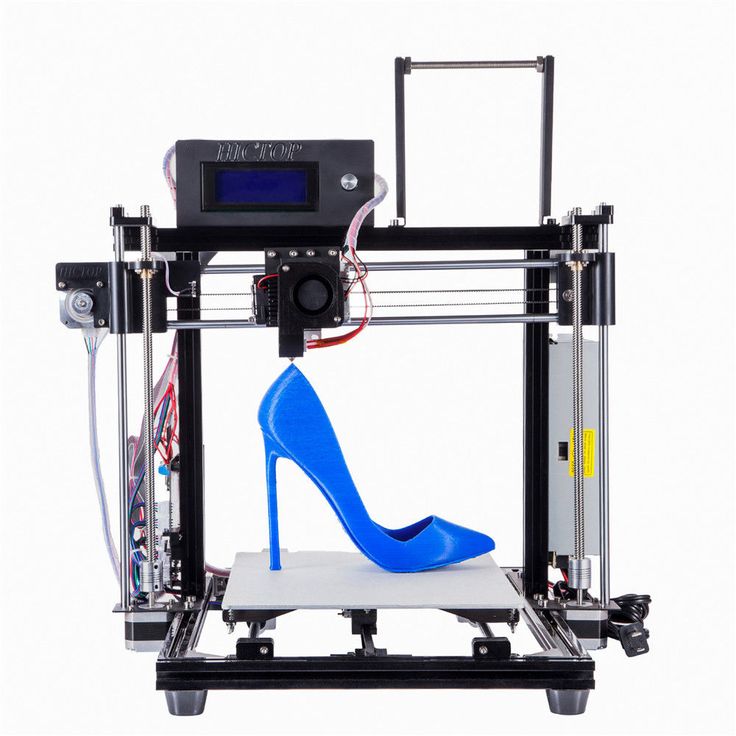 85 mm
85 mm
Epsilon W50 3D Printer with Smart Cabinet (SC)
$11,495.00
Buy Now
Save $500 when you bundle an Epsilon W50 3D printer with a Smart Cabinet Filament Management System from BCN3D. The Smart Cabinet (SC) completes the Epsilon ecosystem, offering seamless integration with Epsilon W50 while maximizing its uptime. Its filament humidity control boosts your printers’ performance, keeping your materials in optimal condition. In addition, its uninterruptible power supply protects your work at all times, avoiding the risk of losing your print job due to power outages.
The BCN3D Smart Cabinet is equipped with sturdy caster wheels that allow the 3D printing workstation to be moved smoothly within any environment including manufacturing, universities, or even a garage. The Smart Cabinet is also stocked with a sliding drawer to keep all the necessary 3D printing tools in one convenient location. This is the complete solution for professional 3D printing production.
This is the complete solution for professional 3D printing production.
WorkCenter 500
$250,000.00
Now Available! – Starting at $250k USD, we have designed this extra large-scale 3D printer to provide affordability – without sacrificing quality or throughput. It uses a Fused Filament Fabrication (FFF) system and is currently the only machine in the large format category to provide the option of pellet or filament extruder(s) – or both!
- Print Volume: 1,400 mm x 2,800 mm x 700mm (2.7 m3 of print volume)
- Extruder Standard Type: Spool and Pellet
- Throughput Range: 1 kg/hr up to 6.8 kg/hr (15 lb/hr)
Please see our brochure for more information on the WorkCenter 500!
Introducing the WorkCell — Our large format 3D printer with heated enclosure!
Coming Soon – With a print volume of more than 1 cubic meter, the WorkCell’s heated enclosure will enable users to go beyond polymers that are typically printed in an open ambient environment, including commodity plastics, engineered plastics, and high performance plastics.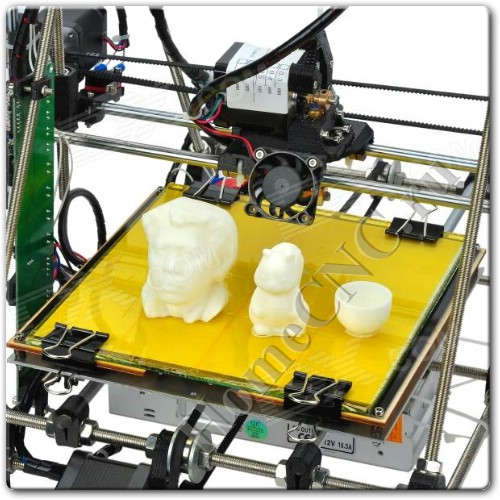
FOLLOW US
6402 E. Rockton Road
Roscoe, Illinois 61073 USA
+1.779.771.0000
© 2021 Copyright 3D Platform
About 3D Platform
Contact
Resellers
Terms & Conditions
Purchase Order Terms & Conditions
Privacy Policy
End of Life
3D printing of mixed propellant / Sudo Null IT News
To start the video.
3D printed propellant blend - we did it. After a hundred experiments, several waves of despair and stages of acceptance of the inevitable. Made and patented.
The developed technology for the additive production of solid propellant charges (SFC) from mixed propellant propellant (SRT) for a solid propellant rocket engine (SRM) using the FDM printing method includes: a special SPT composition with the required energy and operational parameters, the layer-by-layer synthesis 3D printer itself for printing rocket fuel; and several related technologies.
What is all this for?
Yes, then, in order to “disrupt” the rocket and space industry, and in particular, “disrupt” solid rocket science, which makes up 99.9% of all rocket science, and which now suffers from many shortcomings (pains) inherent in the current technology for creating TTZ.
Firstly, 3D printing is devoid of all the shortcomings of modern TTZ manufacturing technologies. The production of mixed solid polymer propellants for solid propellant rocket engines (SSREs) today is represented by casting (vacuum and pressure) and pressing through a matrix. Casting is characterized by all defects of a rheological nature: volumetric shrinkage, lugs, bays, etc.; and pressing has a strict limitation of the geometric parameters of the TTZ and additional operations in the technological process associated with ensuring safety. After casting and pressing, TTZ is usually machined, in most cases by hand. In general, the current technologies for the manufacture of TTZ after the polymerization and cooling process have a large proportion of defects associated with product cracking.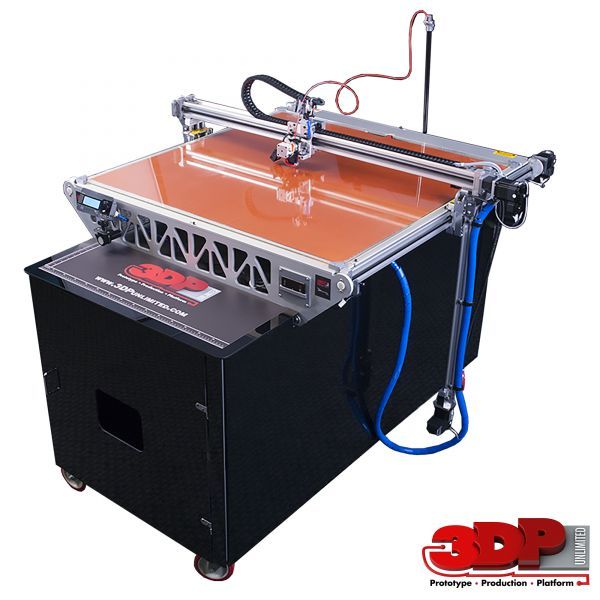 Plus, the need for a huge range of technological equipment for molding combustion channels (profiled needles, multi-piece needles, fingers, etc.). and additional equipment to ensure the tightness of the process (inserts, cuffs, sealing rings), which prevents the liquid mass of explosive fuel from entering the elements of butt joints. It is also necessary to additionally strengthen the body of the product due to the large internal loads on it during polymerization and cooling, resulting in a parasitic mass. Another disadvantage is the time - together with control operations, polymerization can take up to one and a half months. 3D printing of CPT is devoid of such disadvantages.
Plus, the need for a huge range of technological equipment for molding combustion channels (profiled needles, multi-piece needles, fingers, etc.). and additional equipment to ensure the tightness of the process (inserts, cuffs, sealing rings), which prevents the liquid mass of explosive fuel from entering the elements of butt joints. It is also necessary to additionally strengthen the body of the product due to the large internal loads on it during polymerization and cooling, resulting in a parasitic mass. Another disadvantage is the time - together with control operations, polymerization can take up to one and a half months. 3D printing of CPT is devoid of such disadvantages.
Secondly, the uniformity and inflexibility of TTZ production. Each application problem solved by an aircraft with a solid propellant rocket engine has its own energy parameters: high-energy rocket boosters and meteorological rockets have different laws of change in thrust over the time of engine operation, therefore, for the manufacture of TTZ for boosters, there is its own technological process, and for meteorological rockets - its own, i. e. Specialization of production is required, with all the ensuing economic difficulties. Controlling the properties of a TTZ at each point in its volume using 3D printing makes it possible to create various TTZs with highly customizable energy characteristics and different dimensions on a relatively small production area for each specific task.
e. Specialization of production is required, with all the ensuing economic difficulties. Controlling the properties of a TTZ at each point in its volume using 3D printing makes it possible to create various TTZs with highly customizable energy characteristics and different dimensions on a relatively small production area for each specific task.
Thirdly, in the general case, the TTZ combustion surface area:
where P(x) is the combustion surface perimeter in the section perpendicular to the longitudinal axis of the charge.
That is, in order to increase the TTZ combustion surface area, on which the solid propellant rocket engine pressure and, as a result, thrust, depend, it is necessary to increase the curvilinearity of the TTZ cross-sectional profile. On fig. 1 shows a TTZ with a complex profile printed on our 3D printer.
The existing technologies for the production of solid propellant charge (SPC) are limited in the creation of complex profiled SPC, which limits the energy characteristics of solid propellant rocket engines. To complicate the curvilinearity of the TTZ cross-sectional profile, a wide range of technological equipment is required.
To complicate the curvilinearity of the TTZ cross-sectional profile, a wide range of technological equipment is required.
Even at the dawn of astronautics, engineers developed a number of complex forms of TTZ (Fig. 2), but technologically they could only implement them as experimental samples. Therefore, due to the relative ease of manufacture, the most common type of cross-sectional profile for a solid propellant rocket motor today is a hollow cylinder with a round hole in the center, a typical example of which is the Space Shuttle System solid propellant booster (Fig. 3). By the way, even with such a simple geometry of the combustion channel, the “sidewall” of the Space Shuttle is the most powerful rocket engine in the history of mankind. But what happens if you make a slightly more complex profile using 3D printing in the same form factor?
Fig. 1 - An example of a complex TTZ profile printed on our 3D printer 2 — Dependence of thrust profiles on the curvature of the TTZ combustion channel 3 - "Side" Space Shuttle Fourthly, 3D printing itself is the most robotic technology. For 3D printing, there is no need for a large number of workers in order to assemble / disassemble numerous technological pins, needles and mandrels; wash the mixing tank; cut off excess fuel, etc. Therefore, this technology is much safer. The level of manual labor involved in pouring fuel can be seen in this excellent video.
For 3D printing, there is no need for a large number of workers in order to assemble / disassemble numerous technological pins, needles and mandrels; wash the mixing tank; cut off excess fuel, etc. Therefore, this technology is much safer. The level of manual labor involved in pouring fuel can be seen in this excellent video.
Fifthly, additive manufacturing technologies make it possible to digitalize the manufacturing process of TTZ, which, in turn, will allow, for the first time, to introduce adaptive business processes of the third wave in the rocket and space industry.
By itself, managing the pairing of each point of the TTZ volume by layer-by-layer synthesis makes it possible and economically justified to widely use digital twin technology, IoT elements and machine learning to improve the quality of the production process.
Particular attention was paid to safety in our project. The design includes many technical solutions that ensure the safety of the process: from modification of the fuel composition to an armored capsule for a few personnel who control the printing.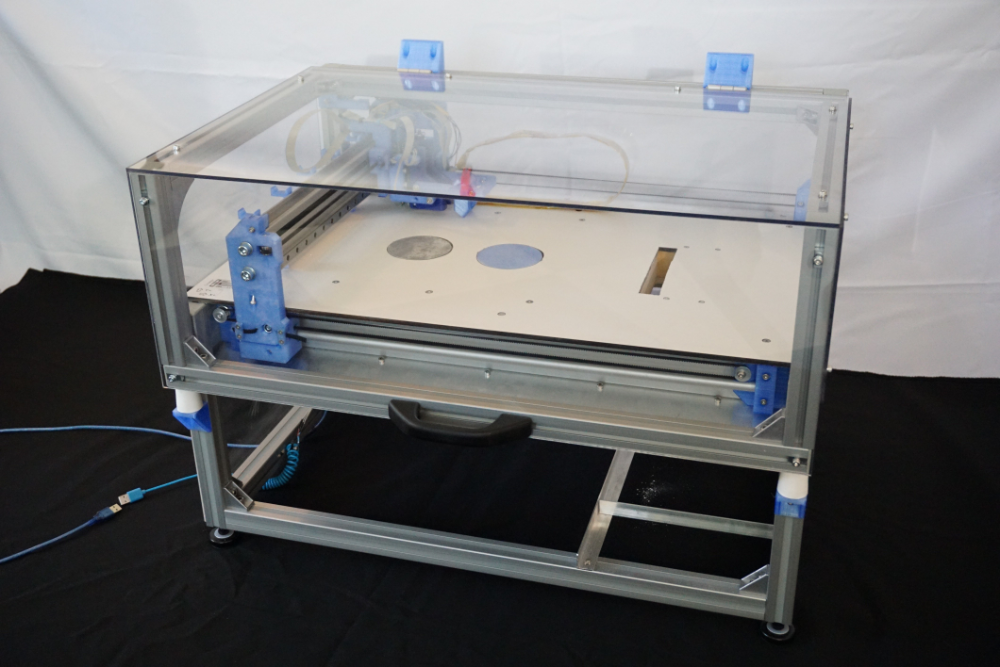
These are the main advantages of the technology of additive production of TTZ from mixed propellant.
Of course, we are not alone in seeing all these advantages of this technology. In addition to our modest project, this technology, judging by open sources, is being worked on in the USA, Great Britain, the Netherlands and China.
In the US, several major research institutes are doing this, such as the Institute of Combustion, Raytheon Technologies Corporation, and a number of technology start-ups of various levels, some of which are commissioned by DARPA, whose visible results are still classified.
On the other hand, a start-up that prints plastic fuel for hybrid rocket engines (HRE) is openly showing its results to everyone. Through 3D printing, they have improved the energy performance of the gas turbine engine.
In general, the Americans are developing this technology under at least two defense contracts: the first is the concept of on-demand payload delivery in the shortest possible time to a given orbit, and the second is a concept that they call “ROCKET FACTORY IN-A- BOX", and according to our project "Expansion" - Autonomous Rocket Plant (ARZ), which I will write about in a separate article - about how 3D printing technology radically transforms the current technological order that has developed in the rocket and space industry, and in particular how additive manufacturing of rocket fuel will change the battlefield (if the editors of Habr give the go-ahead on such a topic).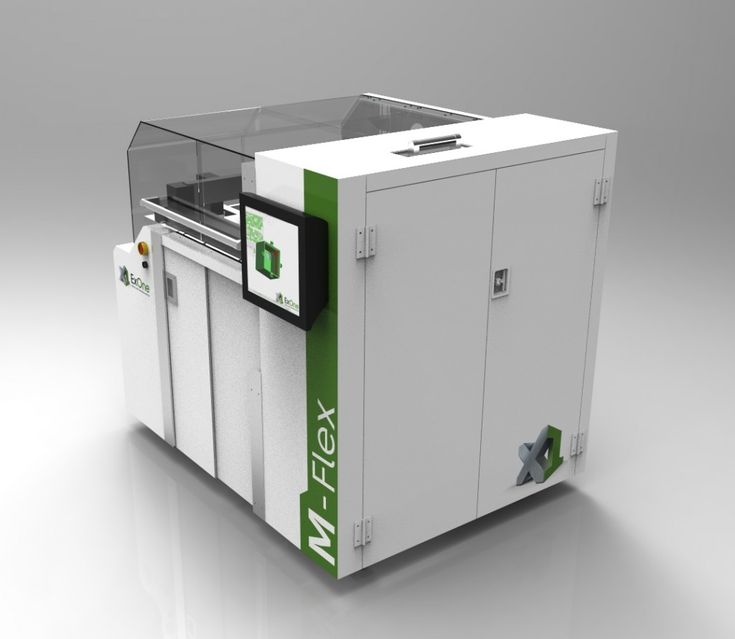
Further development of the Expansion project
missiles.
The market for small spacecraft launch services is an excellent place for the first stage of expansion. The advantages of 3D-printed solid rocket fuel will make it possible to abandon liquid launch vehicles, which will radically reduce the cost of launching pico / nano satellites.
The current stage of the project is the search for ways of development and scaling.
3D printing - iFizMat
3D printing
|


 Additive technologies in design and artistic processing of materials. — Lipetsk, Saratov : Lipetsk State Technical University, Vocational education, 2021. - 72 p.
Additive technologies in design and artistic processing of materials. — Lipetsk, Saratov : Lipetsk State Technical University, Vocational education, 2021. - 72 p. 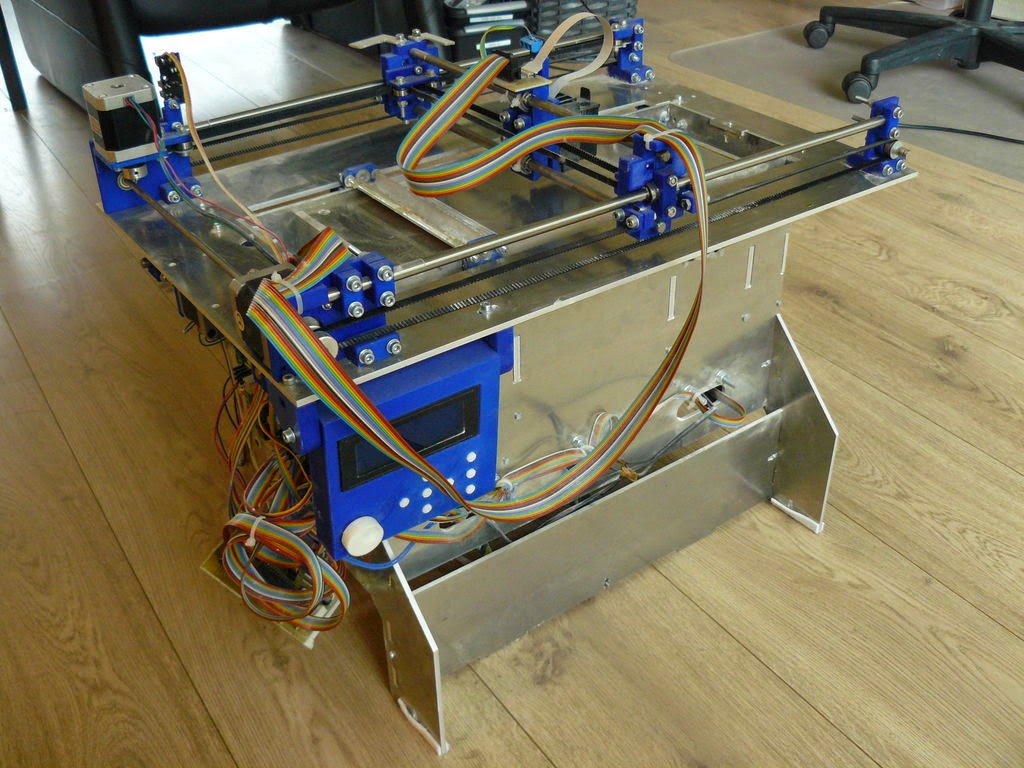
 1.4, robot behavior diagram, png
1.4, robot behavior diagram, png 